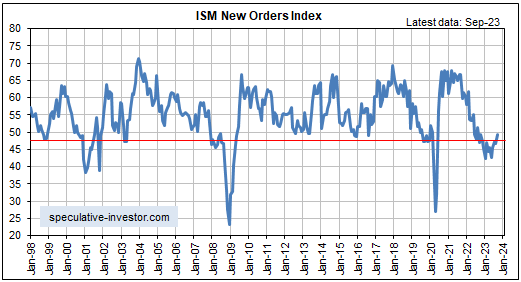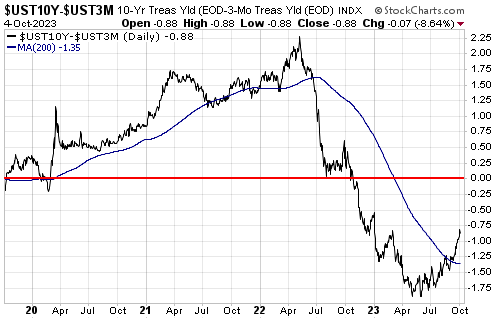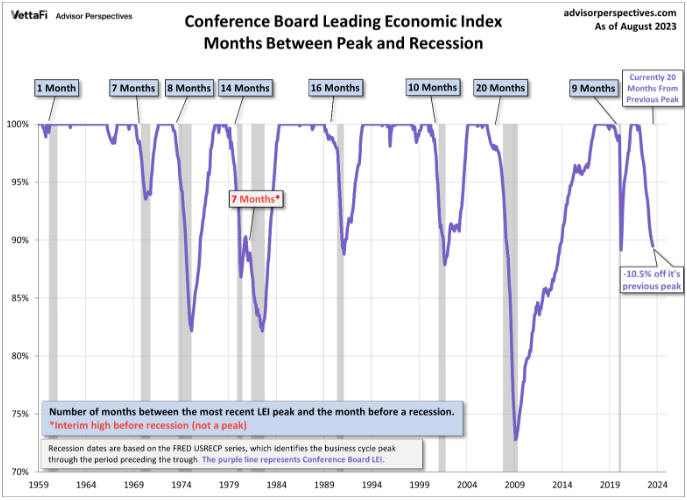[This blog post is an excerpt from a commentary published at www.speculative-investor.com on 25th October 2023]
We aren’t geopolitical experts and do not know how the Israel-Hamas war will unfold*. Nobody does. There are far too many unknowns at this stage for even the geopolitical experts to do anything other than guess. What we are able to do is figure out what the markets are discounting, that is, what the majority of market participants currently believe will happen. Today’s assessments of how the conflict will play out may turn out to be wrong and therefore could necessitate large price adjustments in the future, but when deciding what to do in the markets it is important to know what’s currently priced in. Here’s what we think is priced in right now:
1) The oil market
At the time of the Hamas attack on Israel the oil market was slightly oversold due to a price plunge over the preceding week. Consequently, at least a countertrend rebound was likely regardless of news.
During the three trading days after the war news hit the wires (9th-11th October), the oil price bounced and then pulled back. We wrote in the 11th October Interim Update that this price action suggested an expectation among large oil traders that the conflict would not broaden or that if it did broaden then Saudi Arabia would act to offset any loss of oil from Iran.
The subsequent price action indicates that the oil market has not ‘changed its mind’. We say this because the rebound in the oil price from its pre-war-news low looks more like a countertrend reaction than the start of a move to above the September-2023 high. Also, the extent of the backwardation in the oil futures market has decreased over the past week, which suggests less urgency to stock-up on physical oil.
In summary, the oil market does not believe that the war will have a significant negative effect on global oil supply.
2) The gold market
Prior to the war news hitting the wires the gold market was very oversold in both momentum and sentiment terms and therefore was poised for a rebound. As a result of the war news, the rebound has been much stronger than it otherwise would have been.
The performance of the US$ gold price indicates that large speculators initially were uncertain as to how big the war would become. Would it be confined to Israel versus Hamas in/around Gaza, or would it expand to encompass direct involvement from the US and Iran? Also, how much additional US government spending would result from the war in the Middle East and how would this spending affect the resources directed towards the NATO-Russia war in Ukraine?
At the moment large speculators in the gold market believe that these are open questions, with a substantial expansion of the war being one of the more likely scenarios. That’s a reasonable conclusion because the gold price continues to hover around resistance at US$1980-$2000 — about $180 above where it was three weeks ago.
We’ll know that the perceived level of uncertainty/risk has increased significantly if the gold price breaks above US$2000. By the same token, we’ll know that the perceived level of uncertainty/risk has begun to wane when there is a clear downward reversal in the US$ gold price. Note that a downward reversal in the US$ gold price is likely to precede a turn for the better in the news from the Middle East.
3) The stock market
In the US stock market, the war has prompted a shift away from risk but has been very much a secondary issue. The primary issue is the downward trend in the bond market (the upward trend in long-dated Treasury yields).
4) The currency market
In early-October the Dollar Index (DX) was very overbought and had just begun to ‘correct’. The war news may have reduced the magnitude of the correction, but up until now has not been sufficient to propel the DX above its early-October high.
As far as we can tell, according to the currency market the outbreak of war in the Middle East has increased the attractiveness of the US$ relative to other fiat currencies but also added to concerns about the pace at which the US government is going into debt. Putting it another way, what’s priced into the currency market at the moment is both the uncertainty regarding the outcome of the war and the offsetting consideration that the war is increasing the risk of a US government debt spiral.
Summarising all of the above, the oil market is not concerned about a significant supply disruption, the gold market has priced-in considerable uncertainty/risk and could price-in more of the same before reversing, the US stock market is more concerned about bond yields than about the Middle East, and the currency market thinks that the benefits of holding the US$ in a period of increasing geopolitical instability are being mostly offset by the likelihood that a further increase in geopolitical instability would accelerate the already rapid pace of US government deficit-spending.
*As is always the case these days when major geopolitical events occur, many people quickly become ‘experts’ as a result of the large volume of information that suddenly becomes available over the internet. People who a month ago could not have identified Gaza on a map and knew nothing about the history of Hamas are now ‘experts’ who can confidently explain why the events have occurred and what’s going to happen. The actual experts, on the other hand, know that there are a lot of unknowns and therefore that the outcome is uncertain.
 Print This Post
Print This Post



